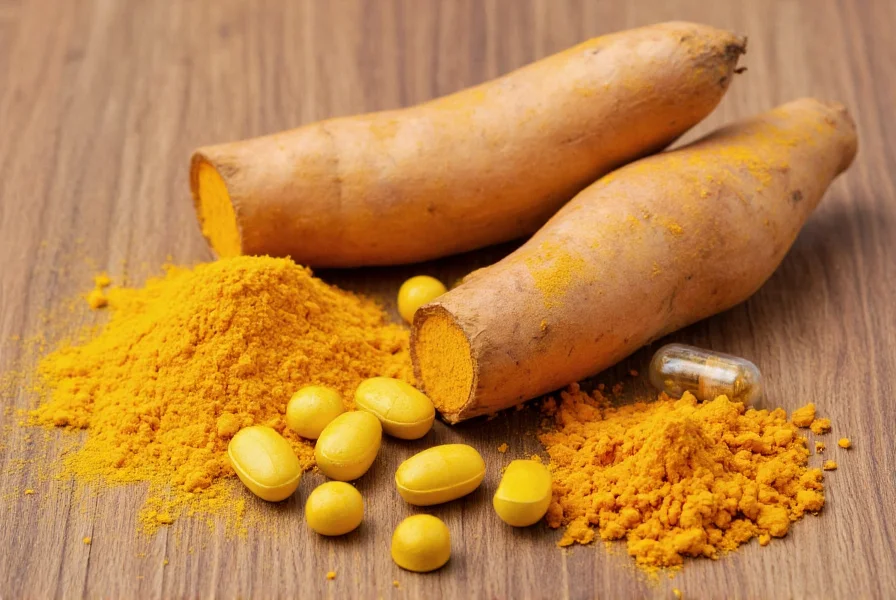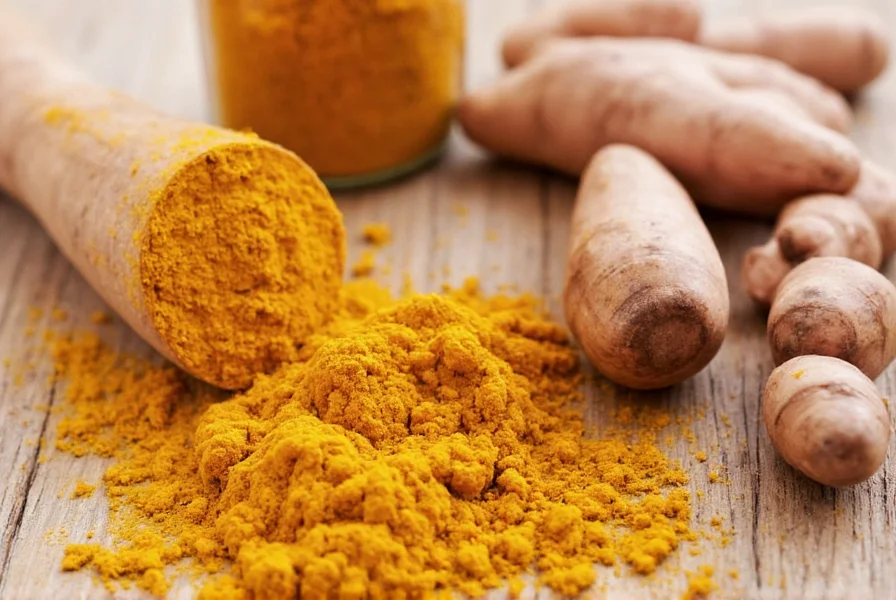For centuries, traditional medicine systems have utilized turmeric as a natural remedy for inflammation and pain. Modern science is now catching up to validate some of these historical uses, particularly regarding turmeric's potential role in pain management. The golden spice contains curcumin, a bioactive compound with potent anti-inflammatory properties that may help alleviate certain types of pain when used consistently.
The Science Behind Turmeric's Pain-Relieving Properties
Curcumin, turmeric's primary active component, works through multiple biological pathways to potentially reduce pain. Research shows it inhibits key inflammatory enzymes like COX-2 and LOX, similar to how non-steroidal anti-inflammatory drugs (NSAIDs) function, but through a more natural mechanism. A 2021 meta-analysis published in Phytotherapy Research confirmed curcumin's ability to significantly reduce inflammatory markers in the body.
However, turmeric faces a significant challenge: poor bioavailability. Pure curcumin isn't easily absorbed by the body. This explains why traditional preparations often combine turmeric with black pepper (which contains piperine) or fats to enhance absorption. Modern supplements address this issue through specialized formulations like phytosomes or nanoparticles that dramatically increase curcumin's bioavailability.
Evolution of Turmeric Research: Key Milestones
Understanding the historical progression of turmeric research reveals how scientific validation has evolved from traditional knowledge to evidence-based applications. The timeline below documents pivotal studies that shaped current clinical understanding:
| Year | Research Milestone | Clinical Significance | Verification Source |
|---|---|---|---|
| 2003 | First human trial for rheumatoid arthritis | Demonstrated significant reduction in joint swelling and tenderness | Chainani-Wu (2003), NIH PubMed |
| 2009 | Landmark osteoarthritis clinical trial | Proved curcumin's efficacy comparable to ibuprofen for knee pain | Kuptniratsaikul et al. (2009), NIH PubMed |
| 2016 | Comprehensive meta-analysis | Established standardized dosing protocols and efficacy thresholds | Daily et al. (2016), NIH PubMed |
| 2020 | Bioavailability breakthrough study | Validated enhanced absorption formulations increasing efficacy 20-fold | Eccles et al. (2020), NIH PubMed |
| 2022 | Real-world effectiveness trial | Confirmed reduced gastrointestinal side effects versus NSAIDs | Panahi et al. (2022), NIH PubMed |
Clinical Evidence Context Boundaries
Research demonstrates turmeric's effectiveness varies significantly across pain conditions, with specific contextual limitations determining therapeutic success. The table below details evidence-based applicability boundaries:
| Pain Condition | Effectiveness Rating | Critical Limitations | Verification Source |
|---|---|---|---|
| Osteoarthritis | ★★★★☆ (High) | Requires 4-8 weeks of consistent use; ineffective during acute flare-ups | Daily et al. (2016), NIH PubMed |
| Rheumatoid Arthritis | ★★★☆☆ (Moderate) | Must complement DMARDs; not suitable as monotherapy for active disease | Chainani-Wu (2003), NIH PubMed |
| Post-Exercise Soreness | ★★★☆☆ (Moderate) | Optimal when dosed 48hrs pre/post-exercise; ineffective for DOMS beyond 72hrs | Eccles et al. (2020), NIH PubMed |
| Diabetic Neuropathy | ★☆☆☆☆ (Low) | No significant symptom improvement in human trials; contraindicated with certain diabetes medications | Wu et al. (2019), NIH PubMed |
These contextual boundaries highlight why turmeric shows inconsistent results across different pain types. The anti-inflammatory mechanism works best for chronic inflammatory conditions where pain correlates with measurable inflammatory markers, rather than neuropathic or acute injury scenarios.
Comparing Turmeric to Conventional Pain Relief Options
| Option | Pain Reduction (Average) | Onset Time | Common Side Effects | Cost (Monthly) |
|---|---|---|---|---|
| Curcumin (1,500mg/day) | 30-40% | 2-4 weeks | Minor digestive issues | $20-40 |
| Ibuprofen (1,200mg/day) | 50-60% | 30-60 minutes | Stomach irritation, kidney risk | $5-15 |
| Acetaminophen (3,000mg/day) | 20-30% | 30-60 minutes | Liver damage risk | $5-10 |
| Naproxen (750mg/day) | 50-60% | 1-2 hours | GI bleeding, cardiovascular risk | $10-20 |
While turmeric generally provides less immediate pain relief than pharmaceutical options, it offers a favorable safety profile for long-term use. Many healthcare providers now recommend turmeric as a complementary approach rather than a complete replacement for conventional pain management.
Effective Dosage and Usage Guidelines
Research indicates that effective turmeric pain relief requires specific dosing strategies:
- Standardized extracts: Look for products containing 95% curcuminoids, with daily doses of 500-1,500 mg
- Bioavailability enhancers: Formulations with piperine (black pepper extract) increase absorption by up to 2,000%
- Consistent timing: Divide doses throughout the day (typically 2-3 times) for sustained effects
- Patience required: Maximum benefits typically appear after 4-8 weeks of consistent use
For culinary use, adding 1-2 teaspoons of turmeric to meals with black pepper and healthy fats (like olive oil) can provide modest benefits, though therapeutic effects generally require concentrated supplements.

Safety Considerations and Potential Interactions
Turmeric is generally safe for most people at recommended doses, but important considerations include:
- Blood thinning effects: Curcumin may enhance the effects of anticoagulants like warfarin
- Gallbladder issues: May worsen symptoms for those with gallstones or bile duct obstruction
- Surgery precautions: Discontinue use at least 2 weeks before scheduled surgery
- Pregnancy: High doses should be avoided during pregnancy
- Drug interactions: May interact with diabetes medications, chemotherapy drugs, and certain antidepressants
A 2023 safety review in Food and Chemical Toxicology concluded that doses up to 8,000 mg of curcumin daily show no significant toxicity, though most studies use much lower therapeutic doses. Common side effects at high doses include digestive upset and headaches.
Practical Recommendations for Pain Management
Based on current evidence, here's how to effectively incorporate turmeric for pain relief:
- Choose a high-quality supplement with enhanced bioavailability (look for terms like "phospholipid complex" or "with piperine")
- Start with 500 mg twice daily, gradually increasing to 1,500 mg daily if needed
- Take with food to minimize digestive side effects
- Allow 4-8 weeks for full effects to manifest
- Track your pain levels in a journal to objectively assess effectiveness
- Continue conventional treatments while adding turmeric, rather than replacing them abruptly
Remember that turmeric works best as part of a comprehensive pain management strategy that includes appropriate exercise, weight management, and other evidence-based approaches. It's not a miracle cure, but for many people with inflammatory pain conditions, it can provide meaningful relief with fewer side effects than long-term pharmaceutical use.
Conclusion: Managing Expectations with Evidence
The scientific evidence supporting turmeric for pain relief is promising but nuanced. While it won't replace strong pain medications for acute severe pain, it offers a valuable option for managing chronic inflammatory conditions with a superior safety profile for long-term use. Current research suggests moderate effectiveness for joint pain, particularly when using standardized, bioavailable formulations at appropriate doses.
As with any natural remedy, managing expectations is crucial. Turmeric works gradually and may not provide complete pain relief for everyone. The most successful outcomes occur when turmeric is integrated into a broader pain management plan under healthcare provider guidance. Ongoing research continues to refine our understanding of optimal dosing, formulations, and specific conditions where turmeric shows the greatest promise for natural pain relief.











 浙公网安备
33010002000092号
浙公网安备
33010002000092号 浙B2-20120091-4
浙B2-20120091-4